Many people know massage feels good, but few understand why. That deep sense of calm, the big exhale, and that noticeable drop in tension afterward aren’t just coincidence, they’re your body’s natural systems responding in real, measurable ways. Massage helps lower stress hormones, improves circulation, and releases muscle tightness, creating a ripple effect that supports both physical and mental well-being.
At Body Techniques, we believe it’s more than just a feel-good experience, it’s science in action. Understanding what’s happening beneath the surface helps you appreciate how touch can truly shift your body and mind. From the chemistry that calms your stress response to the way massage restores balance to your nervous system, these changes are what make regular massage such a powerful tool for modern wellness. Whether you’re simply curious about how it all works or exploring wellness options for your team, it’s fascinating to see how something that feels so simple can have such a deep, biological impact.
The Immediate Physiological Response: Why Massage Feels So Good
The moment a skilled massage therapist begins their work, your body starts to shift gears. Muscles that have been holding on to tension begin to release, softening under steady, intentional pressure. But the real transformation happens in your nervous system.
Massage activates your parasympathetic nervous system, often called the “rest and digest” mode. This is the body’s natural counterbalance to the sympathetic nervous system, the “fight or flight” state that so many professionals operate in throughout the day.
As your body moves into this restorative mode, a series of physiological changes take place:
- Your heart rate slows
- Blood pressure decreases
- Breathing deepens and evens out
- Cortisol, the body’s primary stress hormone, begins to drop
This neurological reset is one of the key reasons massage feels so grounding. In simple terms, your body is receiving a clear message: you’re safe, you can relax now.
At Body Techniques, this is the foundation of our approach, helping people and teams move out of constant stress mode and back into balance, where real recovery can happen.
The Chemistry of Calm: Cortisol, Serotonin, and Dopamine
Massage doesn’t just relax your muscles, it sparks a whole cascade of chemical changes in the brain that lift your mood and restore balance.
Cortisol, the hormone tied to stress, anxiety, and inflammation, drops noticeably even after one session. Lower cortisol translates to less tension, fewer headaches, and sharper focus.
At the same time, serotonin, the neurotransmitter that helps regulate mood and sleep, rises. More serotonin means a calmer mind, better sleep, and even smoother digestion.
Dopamine, your brain’s natural “feel-good” chemical, also gets a boost, enhancing motivation and pleasure. That’s why massage leaves you not just relaxed, but genuinely uplifted.
Together, these shifts create the signature “massage afterglow,” a state of being simultaneously calm, balanced, and re-energized.
What Toxins Are Released After a Massage? The Truth Behind the Myth
If you’ve ever heard someone say, “Massage releases toxins,” you might have wondered: what toxins are released after massage, exactly?
The truth is a bit more nuanced. While massage doesn’t directly flush toxins in the way detox teas or cleanses claim to, it does support the body’s natural detoxification processes.
Here’s what actually happens:
- Improved circulation: Massage increases blood and lymph flow, helping the body transport oxygen and nutrients more efficiently while aiding the removal of metabolic waste.
- Lymphatic system activation: The lymphatic system plays a critical role in filtering out waste and supporting immune function. Massage stimulates lymph movement, which can help the body process cellular debris and inflammation byproducts.
- Hydration importance: Because circulation improves and waste moves through the system faster, staying hydrated post-massage helps the kidneys and liver do their job more effectively.
So, rather than thinking of toxins as mysterious substances being squeezed out, think of massage as a way to optimize your body’s built-in detox system, helping everything from your circulation to your immune response function at its best.
Does Massage Help with Lactic Acid Buildup?
Another common question among athletes and active professionals is whether massage helps remove lactic acid.
Lactic acid (or more accurately, lactate) is a byproduct of muscle metabolism, produced when your body breaks down glucose for energy during intense exercise. The old belief was that lactic acid causes soreness, but recent research shows that’s not entirely accurate.
Lactate clears from the muscles within about an hour after exercise. However, massage still helps with post-workout recovery by addressing the secondary effects of exercise, such as:
- Reducing inflammation in muscle tissue
- Improving blood flow, which accelerates nutrient delivery and waste removal
- Relieving tension and preventing adhesions (knots) from forming
- Promoting flexibility and joint mobility
So while massage doesn’t “flush” lactic acid directly, it supports faster recovery and less soreness through circulation and cellular repair. In short, it helps your muscles heal smarter, not just faster.
The Nervous System Connection: Massage and the Brain
Every knead and press during a massage sends signals from your skin straight to your brain through the peripheral nervous system. These signals activate mechanoreceptors, specialized nerve endings that essentially say, “This feels good.”
That stimulation sparks the release of endorphins, your body’s natural painkillers. Endorphins help ease discomfort and elevate mood, similar to the euphoric rush of a runner’s high.
Massage also calms the sympathetic nervous system, the part of your body responsible for the “fight or flight” response. This reduces stress-driven reactions like rapid heartbeat, tight muscles, and anxiety, leaving you in a deep, restorative state that can last for hours or even days.
For those dealing with chronic stress, this neurological reset can be life-changing. Research shows that regular massage helps regulate the hypothalamic-pituitary-adrenal (HPA) axis, the body’s central stress control system. A balanced HPA axis supports better mood, more energy, and greater resilience to the daily pressures of modern life.
Immune System Benefits: Why Relaxation Strengthens Your Defenses
Stress isn’t just a mental burden, it directly affects your immune system. Chronic stress can suppress immune cell function, making you more susceptible to illness. Massage, by reducing stress hormones and stimulating lymph flow, supports immune health in measurable ways.
Research has found that massage can:
- Increase lymphocyte count (white blood cells that fight infection)
- Enhance circulatory efficiency, which helps immune cells travel where they’re needed
- Reduce inflammatory cytokines, which are linked to stress-related illness
This means that your post-massage calm isn’t just a feeling, it’s your body actively repairing and defending itself more efficiently.
Massage Benefits for Mental Clarity and Focus
In today’s always-on work culture, it’s easy to underestimate the cognitive benefits of massage. When cortisol drops and serotonin rises, your brain shifts into a more balanced and alert state.
That’s why many corporate wellness programs now include onsite chair massages or recurring bodywork sessions, not as a luxury, but as a productivity and retention tool. Employees who receive regular massages often report:
- Improved concentration
- Better sleep
- Fewer stress-related absences
- Enhanced creativity and problem-solving
Massage helps to recalibrate your body’s “internal software,” helping you operate from a calmer, more focused baseline.
How Long Do the Effects of a Massage Last?
The duration of massage benefits depends on factors like frequency, lifestyle, and individual stress levels. For most people, the physiological effects, like lowered heart rate and reduced cortisol, can last from several hours up to a few days.
However, regular sessions (even 30-minute chair massages once a week) can lead to cumulative benefits:
- Long-term reductions in anxiety and muscle tension
- Sustained improvements in sleep quality
- Enhanced resilience to daily stressors
In the same way that regular exercise builds strength, consistent massage builds balance—physically, emotionally, and neurologically.
The Body Techniques Approach: Science-Backed Massage for Real Results
At Body Techniques, we believe that wellness isn’t one-size-fits-all, it’s measurable, adaptable, and backed by evidence. Our massage and wellness programs are designed not just for relaxation, but for real physiological outcomes.
We integrate advanced bodywork techniques with an understanding of the mind-body connection, helping organizations reduce workplace stress and support employee health in sustainable ways. Whether through corporate chair massage, virtual wellness sessions, or holistic stress management workshops, our approach blends comfort with clinical insight.
When teams experience the science of relaxation firsthand, the results speak for themselves: lower stress, higher engagement, and a culture that values human well-being as much as performance.
Ready to Make Science-Backed Stress Relief Part of Your Team’s Wellness Strategy?
Massage is more than a moment of calm, it’s a scientifically proven tool for stress management, recovery, and long-term health.
Explore our corporate massage and wellness programs designed to improve recovery, focus, and overall well-being.










